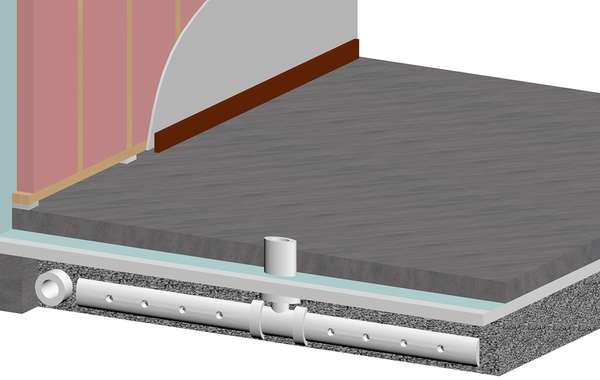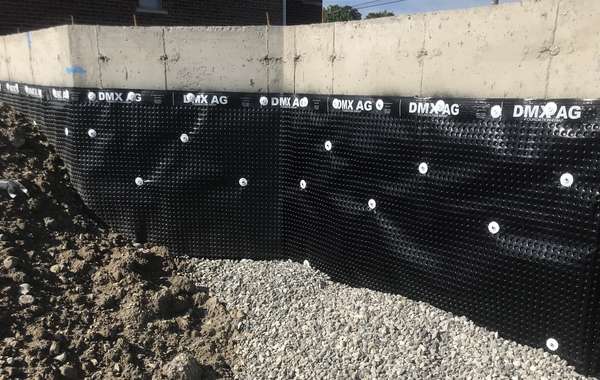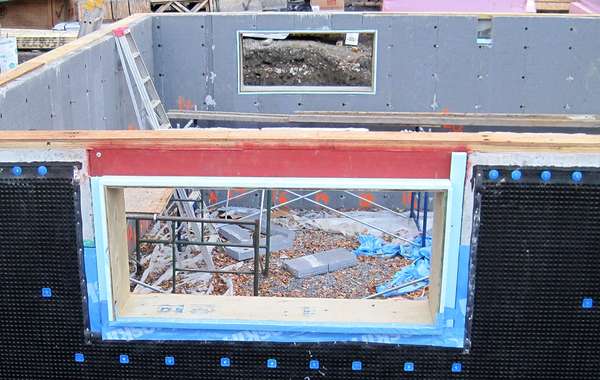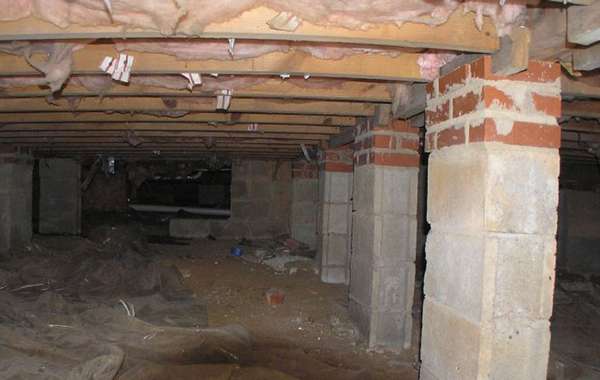How do you fix a moisture problem in a finished basement?
Eight years after our house was built, we noticed that the MDF baseboards in our finished basement became discoloured and swollen from potential moisture. We removed the dry wall, the vapour barrier and the fibreglass insulation in two large areas along the same back wall. The concrete appeared to be saturated with water. We inspected the foundation outside. The foundation seems to be sealed, although we had to dig down six inches or so, below the level of some garden beds and lawn that surrounds the house.
There doesn't appear to be any obvious cracks in the foundation, and some people have suggested it may be a problem with condensation. We have been running two demudifers in the room for some time and have not noticed any more moisture. The concrete is still exposed. No water has been noted to be leaking from two window wells along the wall or up through the floor. Since we noticed this issue along the back wall, some signs of moisture have been noted (along the baseboards) on the wall that is perpendicular to it. Some insulation companies have usggested we should remove the fibreglass insulation and replace it with spray foam insulation and then apply the vapour barrier and dry wall. We are unsure as to how to proceed. Please advise.


























That isn't a big surprise since MDF is a heavily processed wood product very susceptible to moisture damage, so it can be a bit of a canary in the coal mine in terms of basement moisture damage since it will show damage quicker than solid wood and most other process wood finishing materials.
I suspect that the concrete isn’t actually that well-sealed, and even if your foundation wall has a membrane or bituminous spray, it’s unlikely the footing was sealed, and being porous, the concrete will continue to wick moisture from the ground.
But the biggest problem you have, and that all basements have, is a vapour barrier sealing organic materials in with wet concrete.
As for how to fix your basement, you really would need to remove everything and start fresh. We have many pages on how to build basements properly (which I will link below) and the idea you proposed of spray foam insulation on basement walls is not a bad one. However, spray foam itself is a vapour barrier, so you wouldn’t need to apply a typical 6 mil polyethylene vapour barrier on the wall after the foam (though in some areas building inspectors may actually require it). And if you do choose to spray foam your basement walls, there are currently two companies that have switched to much less harmful blowing agents, Demilec and Elastochem, so check with potential installers to see which brand they spray.
The dehumidifiers are a great idea, I would say keep doing that even after you make repairs, or at least keep an eye on the humidity levels and try to keep it below 50 RH. Here are some posts from our Green Building Guide Pages that may help